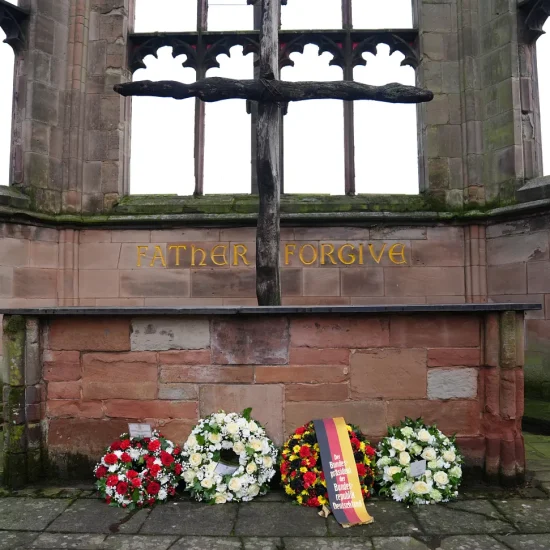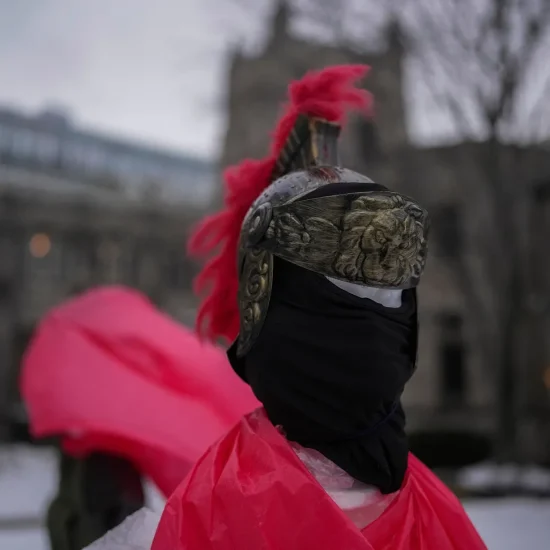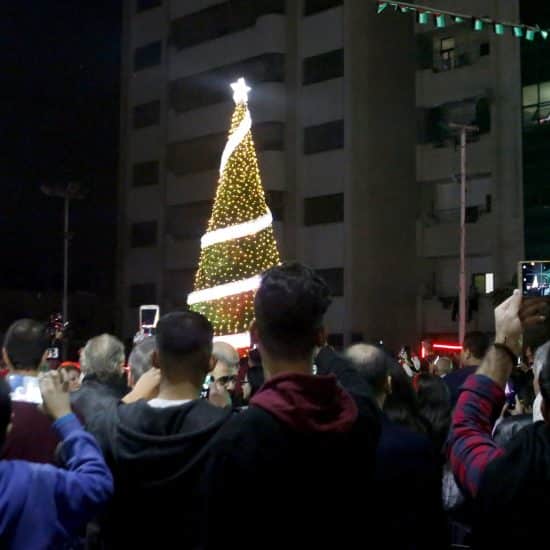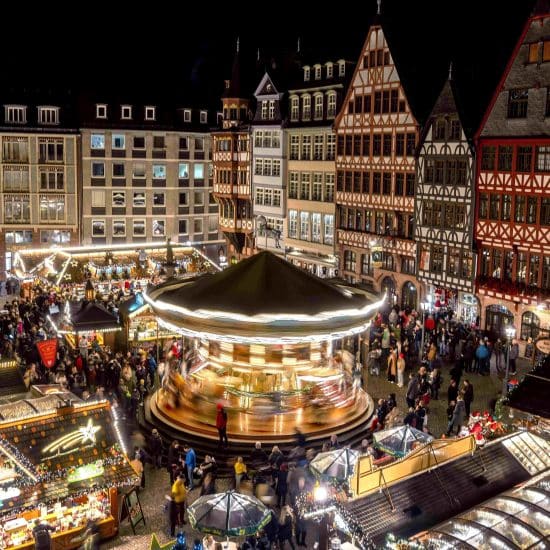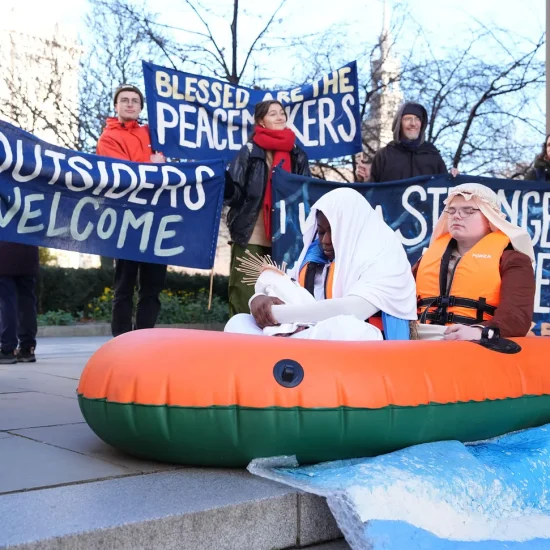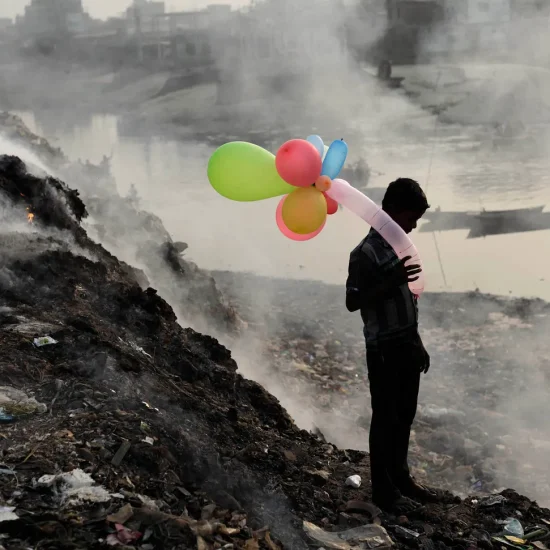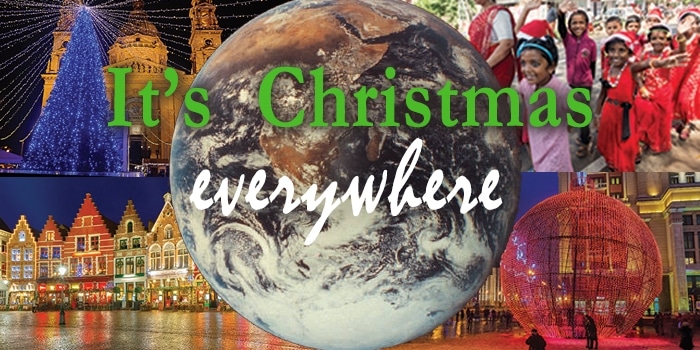
As missionaries adjust to life in a new country, many challenges emerge: building relationships, perhaps learning a new language and learning cultural traditions.
Even Christmas can bring new experiences. Depending on where one lives, “dreaming of a white Christmas” makes little sense in the middle of summer. Seemingly familiar characters like the jolly guy in a red suit can appear with a different name and even on a different day.
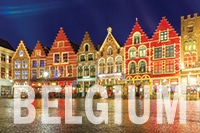 “Santa Claus does not deliver gifts!” Shane McNary noted about Christmas in Slovakia. “Mikulas (the Santa Claus figure) visits on Dec. 6. He is accompanied by an angel dressed all in white, offering candy to kids, and by a devil dressed in dark with a dirty face, who will dirty up the faces of bad kids. It can be rather terrifying for young ones.”
“Santa Claus does not deliver gifts!” Shane McNary noted about Christmas in Slovakia. “Mikulas (the Santa Claus figure) visits on Dec. 6. He is accompanied by an angel dressed all in white, offering candy to kids, and by a devil dressed in dark with a dirty face, who will dirty up the faces of bad kids. It can be rather terrifying for young ones.”
McNary and his wife, Dianne, serve as Cooperative Baptist Fellowship field personnel ministering among the Roma people. The McNarys, from Benton, Ark., led a breakout session at CBF Heartland’s fall gathering at First Baptist Church in Jefferson City, Mo., in October.
McNary explained that gift-giving occurs on Dec. 24 as “the wider culture” says “Ježiško (little Jesus) delivers gifts.” He noted Baptists generally do not say Ježiško gives the gifts since that tradition is seen as Catholic.
“I enjoy Dec. 24’s (generous day) program at the Baptist Church in Kosice,” McNary offered. “It is a day focused on children. Imagine an entire worship service put together like a children’s sermon. I enjoy seeing the kid’s excitement at participating in the program and the obligatory gift bags with a mix of candies and cookies.”
McNary noted the Christmas tradition he most enjoys in Slovakia is “kapustnica,” a sauerkraut soup he called “amazing.” In addition to the soup, other parts of the traditional meal include carp and potato salad.
“The meal and gifts are shared in a family atmosphere,” he explained. “Since American football is not in vogue, most of the families spend time having fun outside with hikes, sledding, skiing and other activities.”
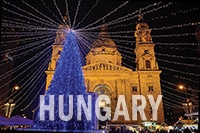 In bordering Hungary, Becky Stanton tells stories of similar Christmas traditions. Stanton and her husband, Larry, serve through American Baptist International Ministries and consider Pate Chapel Baptist Church in Murphysboro, Ill., their home congregation.
In bordering Hungary, Becky Stanton tells stories of similar Christmas traditions. Stanton and her husband, Larry, serve through American Baptist International Ministries and consider Pate Chapel Baptist Church in Murphysboro, Ill., their home congregation.
Stanton explained that in Hungary “they celebrate Santa Claus on Dec. 6,” which includes kids cleaning their boots to place in windows to get candy and small toys. Santa then goes away for the season.
In the lower-elementary school where she teaches English, a teacher dresses up like Santa on that day to give out candy to the good kids while junior high girls dressed like devils accompany him to instead give sticks to “bad kids.” She laughed as she noted, “They really do it,” as the teachers have a list so the “devils” can “shame the bad kids.”
Stanton said that during her first year in Hungary, it surprised her how late people decorate for Christmas, often waiting until Christmas Eve. While Christmas is spent with family, the second day of Christmas celebrations — on Dec. 26 — is when people “box up leftover food and go visiting” with friends.
“We love Christmas here in Hungary,” Stanton added. “It’s beautiful.”
Stanton’s husband is currently working in neighboring Serbia to assist Syrian refugees. She reflected on how his work fits well with the Christmas story, calling Jesus and his parents “a type of political refugees when they were running from Herod and went to Egypt.”
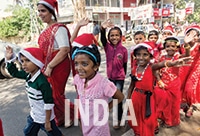 In India, Katie Longkumer tells of vastly different Christmas traditions. Longkumer and her husband, Taku, serve though American Baptist International Ministries and consider Central Baptist Church in Springfield, Ill., their home congregation.
In India, Katie Longkumer tells of vastly different Christmas traditions. Longkumer and her husband, Taku, serve though American Baptist International Ministries and consider Central Baptist Church in Springfield, Ill., their home congregation.
Longkumer calls Christmas there “an interesting experience.” With Christians accounting for only about 3 percent of the population, a lot of schools remain open. She noted this can impact the ability of students to celebrate. In areas where more Christians live, the schools close and celebrations are quite spirited.
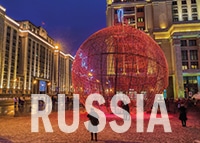 “The youth of the entire village will work all day Christmas Eve decorating the church grounds, building and the approach area,” Longkumer explained. “Celebrations begin with a church service Christmas Eve night. Following the service the young people will move throughout the village caroling and visiting homes to have tea and snacks. Christmas Day is also spent in church with a service in both the morning and evening, followed by a talent show or concert with villagers entertaining one another.
“The youth of the entire village will work all day Christmas Eve decorating the church grounds, building and the approach area,” Longkumer explained. “Celebrations begin with a church service Christmas Eve night. Following the service the young people will move throughout the village caroling and visiting homes to have tea and snacks. Christmas Day is also spent in church with a service in both the morning and evening, followed by a talent show or concert with villagers entertaining one another.
“I really appreciate the fact that Christmas is not a commercial holiday here,” she added. “This is the time of year when people do more shopping, as most of the family will get new clothes for the event. But there is not a focus on extravagant gift-giving or Santa delivering gifts in the night. The focus remains on worship and celebration in the church. Another aspect that I appreciate is that Christmas is a communal celebration, not just a time of family gathering.”
No place like home for the holidays

